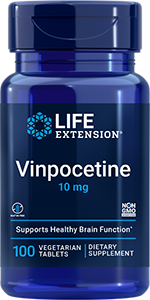 | July 15, 2011 | Vitamin D insufficiency associated with football injuries | | The American Orthopaedic Society for Sports Medicine's Annual Meeting held in San Diego was the site of a presentation on July 10, 2011 of the finding of Michael Shindle, MD of Summit Medical Group and his colleagues of a higher incidence of vitamin D insufficiency among National Football League players with muscle injuries. The current study included 89 NFL players aged 21 to 32 years. Fifty-eight subjects were African American and 31 were Caucasian. Sixteen of the players suffered from a muscle injury. Vitamin D levels were tested in the spring of 2010 during routine pre-season evaluations. Vitamin D deficiency, defined as a level of less than 20 nanograms per milliliter, was identified in 27 participants and insufficient levels of 20 to 31.9 nanograms per milliliter were observed in 45 subjects. Caucasian players had an average level of 30.3 nanograms per milliliter, while African Americans averaged 20.4 nanograms per milliliter. Among those with muscle injury, vitamin D levels averaged 19.9 nanograms per milliliter, which is considered deficient. "Eighty percent of the football team we studied had vitamin D insufficiency," commented Dr Shindle. "African American players and players who suffered muscle injuries had significantly lower levels." "Screening and treatment of vitamin D insufficiency in professional athletes may be a simple way to help prevent injuries," added coauthor Scott A. Rodeo, MD, who is Co-Chief of the Sports Medicine and Shoulder Service at the Hospital for Special Surgery. Joseph Lane, MD of the Hospital for Special Surgery, who also contributed to the study, concluded that "Further research also needs to be conducted in order to determine if increasing vitamin D leads to improved maximum muscle function." | |  |
| As humans age, our muscles atrophy and weaken (a condition termed sarcopenia), regardless of exercise regimen or lifestyle (Bross R et al 1999). The muscles become smaller and less elastic, and muscle injuries become more common (Bross R et al 1999; Baumgartner RN et al 1998). The ability to recover from injuries also decreases, as does tolerance for exercise. Our senior years are a good time to exercise. Exercise by older people improves quality of life. Sarcopenia, even in severe cases, can be reversed through strength training (Aniansson A et al 1981; Frontera WR et al 1992). Exercise has also been shown to control body weight (very important in preventing diabetes, cardiovascular disease, and hypertension) and strengthen bones. It is important for older people to engage in regular, low to moderate exercise rather than strenuous activity (Martini FH 1995). A number of supplements have been shown to promote strength by supporting muscle function. These include the following: Carnitine. Carnitine, an amino acid, helps transport fat into mitochondria, where it is metabolized. Exercise capacity is increased among people with arterial disease following carnitine supplementation (Barker GA et al 2001). In addition, studies show that carnitine supplementation increases muscle function and exercise capacity in people with kidney disease (Brass EP et al 1998). Creatine. Studies show that creatine supplementation effectively increases lean muscle mass and strength (Nissen SL et al 2003; Kreider RB 2003; Gotshalk LA et al 2002). Creatine donates a phosphate molecule to adenosine diphosphate in order to produce more ATP for energy demands. The buildup of lactic acid may also be delayed after creatine supplementation. Glutamine. Although glutamine is the most abundant amino acid in the body, at times the body cannot produce all the glutamine it needs because of extreme stress caused by surgery, prolonged exercise, or infection (Talbott SM 2003; Workman J 2002; Hendler SS et al 2001; Bassit RA et al 2002). |
|  |   | Vinpocetine is derived from vincamine, the major indole alkaloid of the periwinkle plant. No toxic effects have been seen from vinpocetine use at levels far above those recommended for this product. When taken orally, vinpocetine is easily absorbed and it can: - Improve blood supply to the brain
- Increase oxygen and glucose use by the brain
- Improve brain tolerance to hypoxic injury
- Increase vasodilation response to hypoxia
- Maintain optimal energy of healthy brains
- Maintain normal coagulation of blood
- Maintain healthy levels of some neurotransmitters
- Promote healthy attention, memory and concentration
| | | SAMe tablets 
 | SAMe occurs naturally in the body. It is concentrated in the liver and brain and is a major methyl donor in the synthesis of hormones, nucleic acids, proteins, and phospholipids, catecholamines, and other neurotransmitters, such as dopamine and serotonin. SAMe is required for the synthesis of norepinephrine, dopamine, and serotonin, and also plays a role in other intracellular metabolic pathways. SAMe facilitates glutathione usage and maintains acetylcholine levels, which help enhance or maintain cognitive function and attenuate or prevent aggression of aging and neurodegeneration. SAMe levels may become
depleted with sickness and age. Supplementation with the cofactors — folate, trimethylglycine (TMG or betaine), vitamins B6 and B12, together with SAMe — appears to be an effective method to overcome this deficiency. | | | |  | Life Extension Update | What's Hot | Life Extension® Magazine | |














